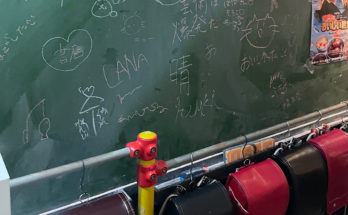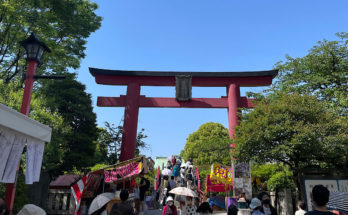Sakura-mochi is a popular Japanese sweet that can be considered a symbol of spring. It is sold in various shops including traditional Japanese confectionery stores, supermarkets, and convenience stores. “Sakura” means cherry blossom, which is the national flower of Japan and a seasonal symbol of spring.

Have you ever eaten sakura mochi?
If you have eaten it, what did it look like?
Truth be told, there are two main types of sakura mochi.
Both of them are named after temples.
One is “Chomeiji(長命寺)”, a type of sakura mochi commonly eaten in eastern Japan, especially in the Kanto region centering around Tokyo. The other is called “domyoji(道明寺),” commonly eaten in western Japan, especially in the Kansai region, where Kyoto and Osaka are located.
Let’s take a look at the differences between each type of sakura mochi:
Chomeiji(長命寺)
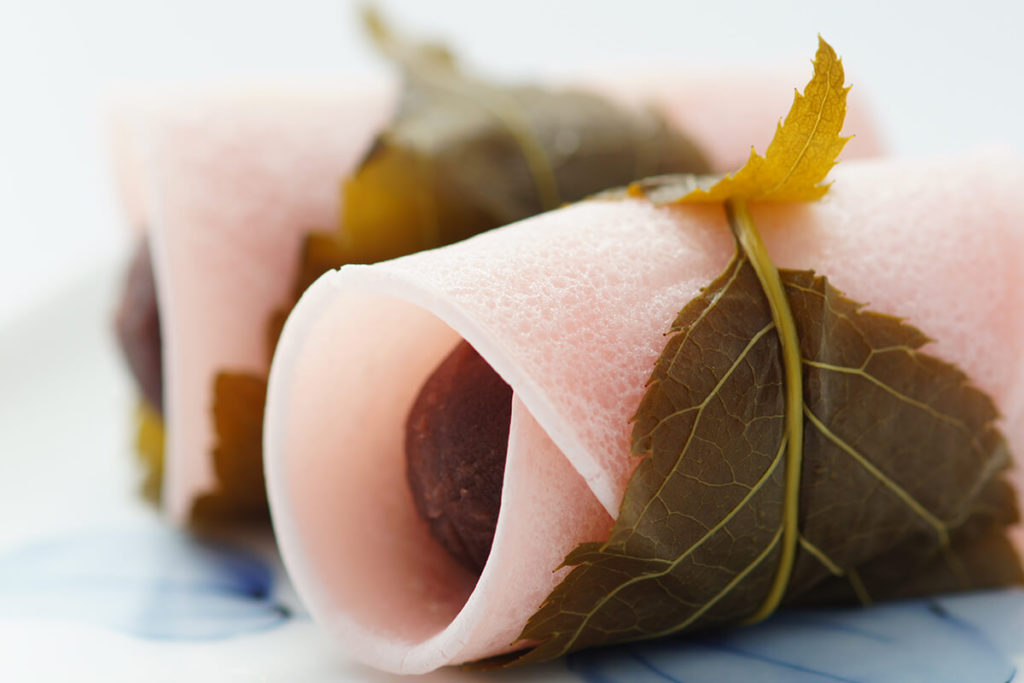
Chomeiji Sakura mochi originated in Tokyo and is also known as “Edo-style” or “Kanto-style” Sakura mochi. It is made by wrapping sweet bean paste with a thin crepe-like pancake that is made from wheat flour and water.
This sakura mochi was born in the mid-Edo period (eighteenth century). The shogun of the time had cherry trees planted along the Sumida River(隅田川), and the area became crowded with visitors viewing cherry blossoms. The abundance of fallen cherry leaves caused concern among the residents living along the river.
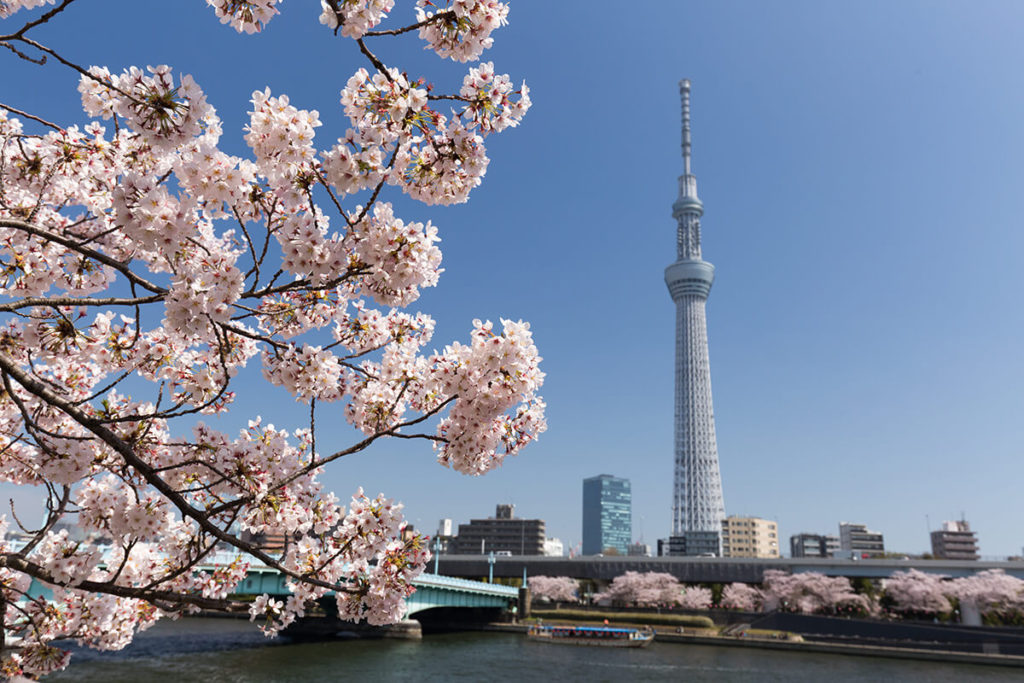
The Tokyo Sky Tree can be seen on the other side of the river.
A gatekeeper employed at Chomeiji Temple(長命寺) located along the Sumida River, had an idea: “Why not make use of these fallen cherry leaves?” He began pickling the leaves in salt and used them as a wrapping for sweets made of flour dough and red bean paste. Afterward, he started selling these unique confections in front of the temple, and they quickly became a hit with the visitors who gathered to see the cherry blossoms.
Domyoji(道明寺)

Domyoji sakura mochi, which was born in Osaka, is a sweet treat made by steaming Domyoji flour (道明寺粉). It features a chewy, light pink glutinous rice ball that is filled with sweet red bean paste and then wrapped in a salt-pickled cherry blossom leaf.
Domyoji flour is a food made from steamed glutinous rice soaked in water, dried and coarsely ground, and was first made at Domyoji Temple(道明寺) in Fujiidera City, Osaka Prefecture, and used as a preserved food.

The flourishing of tourism and Japanese confectionery culture during the peaceful Edo period
Both types of sakura mochi are named after a “temple” (ji=寺).
What is the relationship and history between temples and traditional Japanese sweets, known as “wagashi”? Let’s dive into this topic.
Temples and wagashi have a deep connection. Wagashi has a long history with Buddhist culture, and is an important food served at temples as well as a beloved traditional Japanese sweet enjoyed by many people.
In the Edo period, tourism became linked with wagashi.
During the Edo period, a time of stability and economic growth in Japan, visiting temples and shrines became a popular leisure activity. Gradually, stores selling sweets that visitors could eat on the spot or take home as souvenirs began to open near shrines and temples, and they came to be called “Monzengashi(門前菓子)” which means “confectionery in front of the gates”. Unique Wagashi were created in towns that developed around the gates of castles or temples throughout Japan.
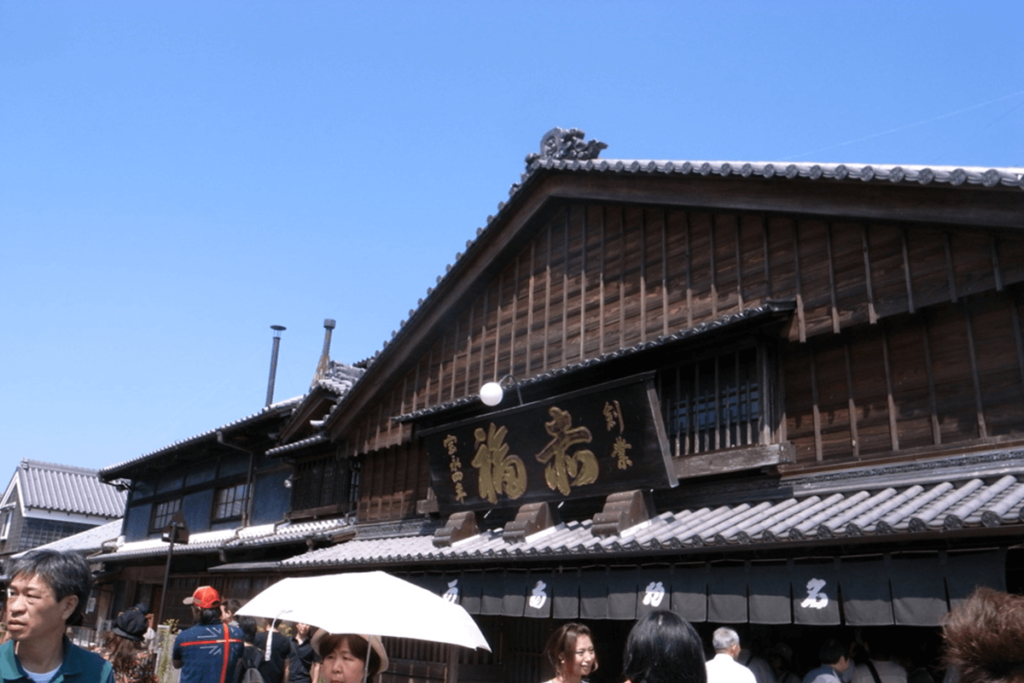
“Monzen-machi” refers to a town that developed in front of a castle or temple gate during ancient times.
On top of that, during the Edo period, wagashi took on an artistic aspect and played a significant role in the culture of the tea ceremony. In the tea ceremony, wagashi became recognized as highly refined works of art, along with tea utensils and tea rooms. Wagashi artisans created artistic sweets by devising shapes, colors, and materials to express the changing seasons. In Kyoto and Tokyo, wagashi of various designs and flavors were produced and eventually spread to other regions of Japan.
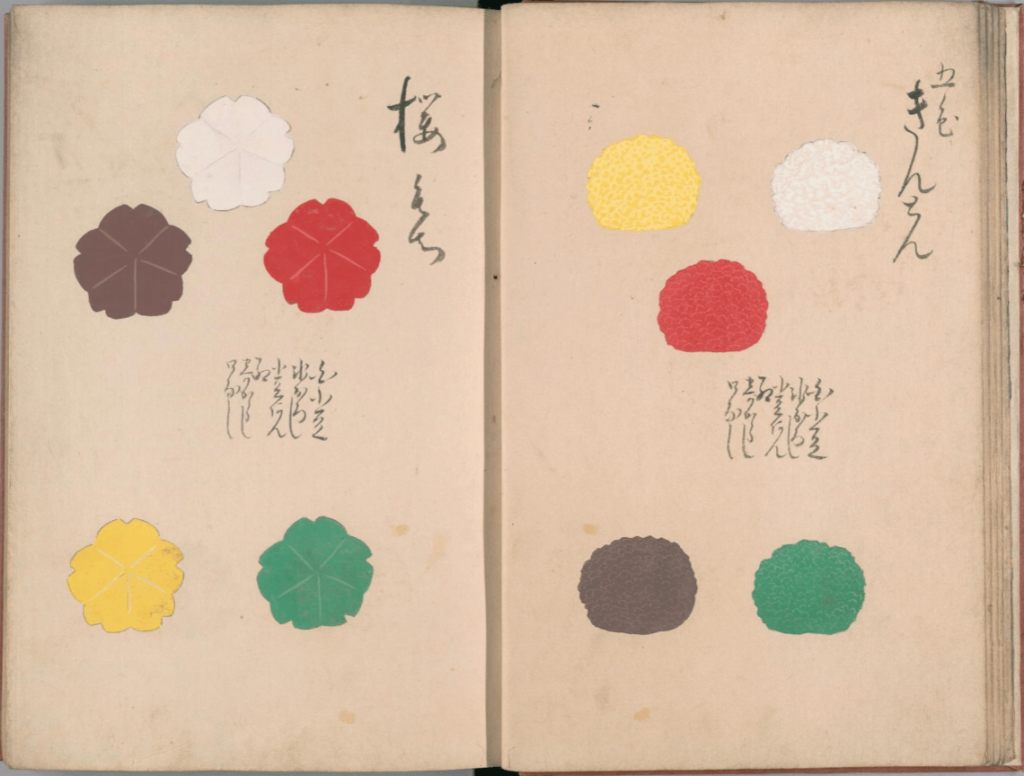
https://dl.ndl.go.jp/pid/2554164/1/13
How did the sakura mochi spread?
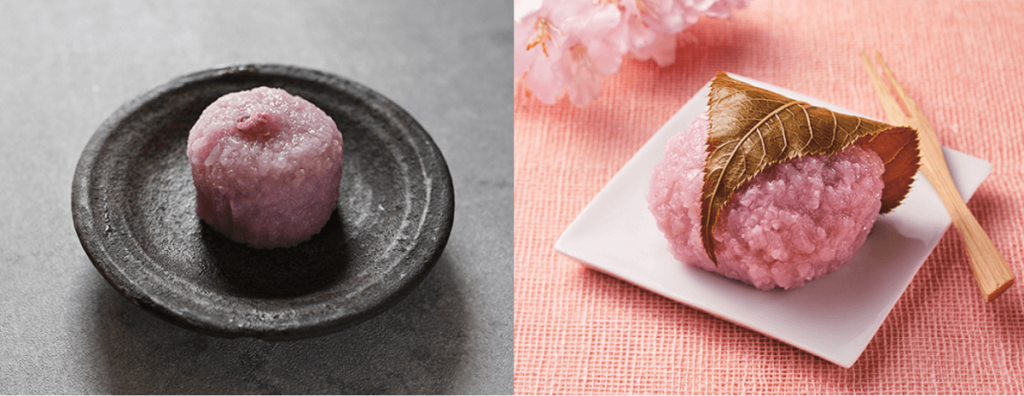
Sakura mochi has been enjoyed throughout Japan.
How did sakura mochi, which originated in Tokyo and Osaka, spread throughout Japan?
As spring comes closer, convenience stores also begin to sell sakura mochi. However, most sakura mochi at convenience stores are Domyoji-type.
Sakura mochi is one of the most popular Japanese sweets throughout Japan, however, according to a survey, many regions eat Domyoji-type Sakura Mochi.
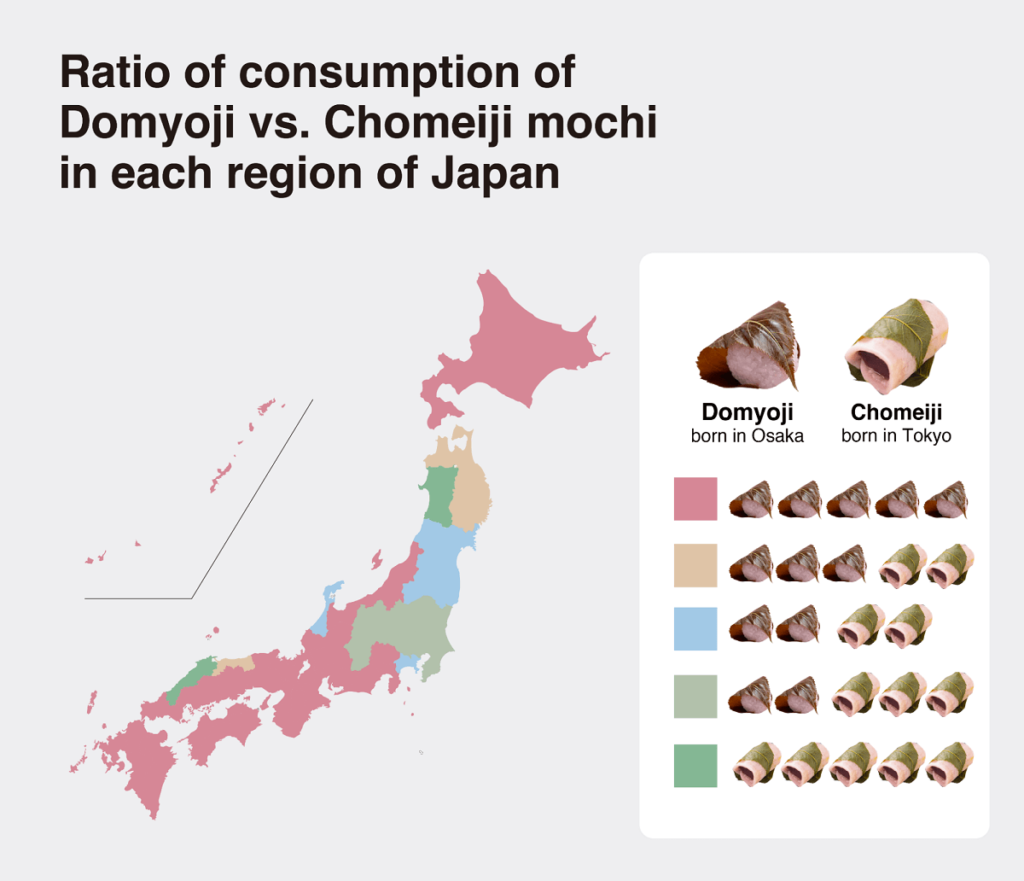
The graph shows the percentage of people who eat Domyoji and Chomeiji Sakura Mochi in each region of Japan.
Chomeiji-type sakura mochi are mostly found in eastern Japan, and are thought to have spread over land.
On the other hand, domyoji-type sakura mochi spread to western Japan. In addition to that, domyoji-type became popular in Hokkaido, Aomori, and Yamagata, and was introduced by the Kitamae-bune(北前船)ship during the Edo period.
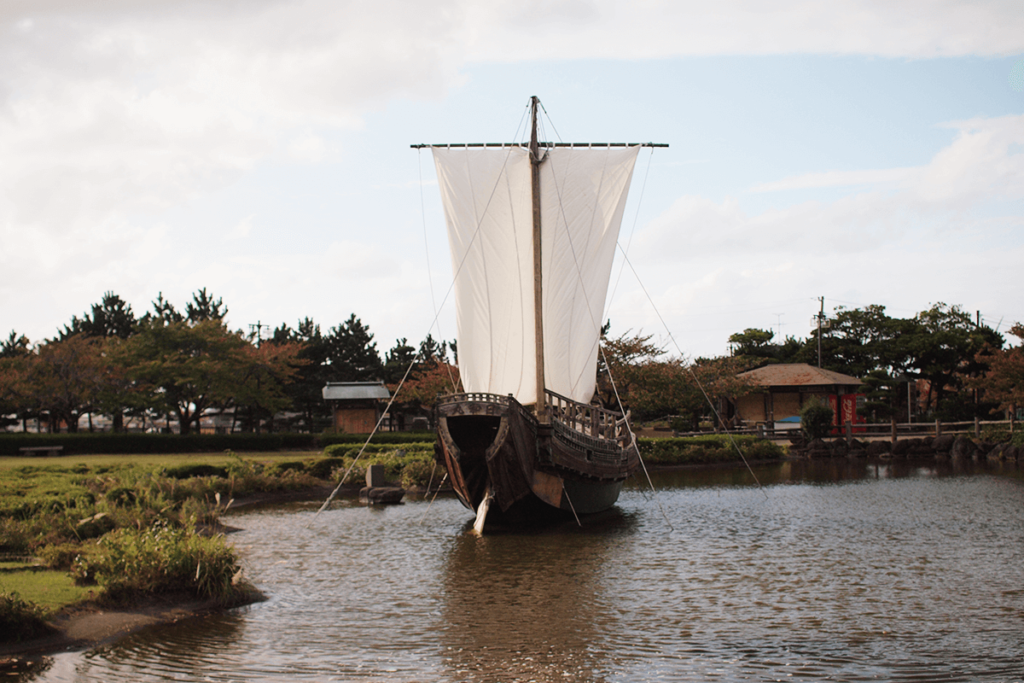
During the Edo period in Japan, the Kitamae-bune was a vital shipping route that connected Hokkaido, Tohoku, and Hokuriku with western Japan through the Japan Sea and the Seto Inland Sea. It was a significant economic artery of the time, transporting supplies and goods such as seafood, rice, lumber, and textiles.

The Kitamae-bune also played a crucial role in the exchange of various cultures between the regions it connected. As ships traveled along the route, they carried people, ideas, and customs, which contributed to the development of a unique and diverse culture in Japan. Domyoji sakura mochi, which originated in Osaka, is also believed to have spread throughout Japan thanks to the Kitamae-bune.
The leaf is edible!

The salted cherry leaves that wrap the sakura-mochi are an indispensable part of the sakura-mochi. The perfume of the cherry blossom leaf makes this springtime mochi an intoxicating treat. And these cherry leaves can be eaten. Some people eat it, some don’t, and there are no rules.
Sakura mochi is a delightful treat that evokes the arrival of spring through all five senses, and it is readily available at convenience stores and supermarkets, making it easy to try and enjoy. Please enjoy the arrival of spring in Japan with this small but delightful sweet.
I’m a freelance editor and director based in Tokushima, Shikoku.
Travel is my passion.I love the time when the extraordinary life of a traveler and the everyday life of the people who live there intersect.
I mainly would like to share with you the lifestyle of the people of Shikoku and the sights to see.


